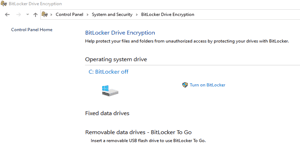Online selling, also known as e-commerce, is the practice of buying and selling products or services over the internet. It has transformed traditional commerce by enabling businesses and individuals to reach a global audience online. This article explores the world of online selling, its advantages, and the crucial steps to get started successfully.
Starting an online selling business is an exciting venture that can offer a wide range of opportunities and potential for growth. In this comprehensive guide, we will explore the key steps and considerations involved in launching your own online store. This guide will be organized into four main sections, each covering a critical aspect of the online selling process.
Disclaimer: I am not responsible for any damage that may occur.
Defining Your Niche and Conducting Market Research
The first step in starting an online selling business is to define your niche. Your niche is the specific market segment or industry you intend to target with your products or services. Choosing the right niche is crucial because it will impact everything from your product selection to your marketing strategy. To select a niche, consider your interests, expertise, and passion. It’s essential to choose a niche you are genuinely enthusiastic about as it will make your work more enjoyable and sustainable in the long run.
Once you’ve identified your niche, it’s time to conduct thorough market research. Research your chosen niche to understand its dynamics, including market size, competition, and trends. Identify your target audience and gather insights into their preferences, needs, and pain points. Analyzing your competitors is equally vital. Study their strengths and weaknesses, pricing strategies, and customer base. Look for gaps in the market or opportunities for differentiation that you can leverage to stand out.
Crafting Your Business Plan
After defining your niche and conducting market research, the next step is to create a detailed business plan. Your business plan serves as a roadmap for your online selling venture, outlining your goals, strategies, budget, and timeline. Here’s what you should include in your business plan:
a. Goals and Objectives: Clearly define your short-term and long-term goals. Determine what you aim to achieve with your online store, such as sales targets, revenue projections, and customer acquisition goals.
b. Budget and Financing: Calculate the startup costs, ongoing expenses, and potential sources of financing. Consider expenses like website development, inventory, marketing, and operational costs.
c. Product or Service Strategy: Outline your product or service offerings in detail. Specify how you will source or create these offerings and explain their unique selling points (USPs).
d. Pricing Strategy: Determine your pricing strategy based on factors like production costs, market competition, and perceived value. Decide whether you’ll offer discounts, promotions, or subscription models.
e. Marketing and Promotion: Develop a marketing plan that includes strategies for reaching your target audience. Include both online and offline marketing channels, such as SEO, content marketing, social media, email marketing, and advertising.
f. Sales and Distribution Channels: Describe how you plan to sell and distribute your products or services. If you’re selling physical products, detail your shipping and fulfillment processes.
g. Financial Projections: Create financial forecasts, including income statements, cash flow statements, and balance sheets. These projections will help you track your financial performance and secure financing if needed.
Setting Up Your Online Store
With a solid business plan in place, you can now move on to setting up your online store. This step involves choosing the right e-commerce platform, designing your website, and configuring essential elements for a seamless customer experience.
a. Choose an E-commerce Platform: Selecting the right e-commerce platform is critical to your online selling success. Some popular options include:
- Shopify: Known for its user-friendly interface and extensive app ecosystem.
- WooCommerce: A plugin for WordPress, suitable for those who want more customization.
- BigCommerce: Offers robust features and scalability for growing businesses.
- Magento: A powerful platform for large-scale e-commerce operations.
- Marketplace Platforms: Consider selling on established marketplaces like Amazon, eBay, or Etsy if you prefer not to run a standalone website.
Evaluate these platforms based on factors like cost, ease of use, scalability, and the specific needs of your online store.
b. Design Your Online Store: The design of your online store plays a crucial role in attracting and retaining customers. Customize your website to reflect your brand identity and resonate with your target audience. Ensure that your site is visually appealing, easy to navigate, and responsive on both desktop and mobile devices. Consistency in design elements, such as logos, color schemes, and fonts, helps build a strong brand presence.
c. Product Listing and Inventory Management: Upload your products or services to your online store. Provide detailed product descriptions, high-quality images, and clear pricing information. Implement an inventory management system to keep track of stock levels and avoid overselling.
d. Payment and Shipping Options: Integrate secure payment gateways that allow customers to make payments online. Offer a variety of payment methods to accommodate customer preferences. Configure shipping options, including shipping providers, rates, and delivery times. Be transparent about shipping costs and delivery estimates.
Marketing, Customer Service, and Growth Strategies
Once your online store is up and running, the work is far from over. Successful online selling requires ongoing marketing efforts, exceptional customer service, and strategies for sustainable growth.
a. Marketing Your Online Store: Develop a comprehensive digital marketing strategy to drive traffic and sales to your online store. Key components of your marketing plan may include:
- Search Engine Optimization (SEO): Optimize your website for search engines to improve visibility in organic search results.
- Content Marketing: Create high-quality, relevant content that educates, entertains, or solves problems for your target audience.
- Social Media Marketing: Utilize platforms like Facebook, Instagram, Twitter, and Pinterest to engage with customers and promote your products or services.
- Email Marketing: Build and nurture a mailing list to send targeted email campaigns, promotions, and newsletters.
- Paid Advertising: Invest in pay-per-click (PPC) advertising on platforms like Google Ads and social media ads to reach a broader audience.
- Influencer Marketing: Collaborate with influencers in your niche to leverage their reach and credibility.
b. Providing Excellent Customer Service: Customer satisfaction is vital for building trust and encouraging repeat business. Offer prompt and helpful customer support through various channels, such as email, live chat, or phone. Address customer inquiries, concerns, and feedback professionally and promptly. Consider implementing a return and refund policy that is fair and transparent.
c. Monitoring and Optimization: Continuously monitor the performance of your online store by analyzing data and metrics. Pay attention to website traffic, conversion rates, sales trends, and customer behavior. Use this data to make informed decisions and optimizations to improve your website, product offerings, and marketing strategies.
d. Scaling Your Business: As your online selling business grows, explore opportunities to scale. Consider expanding your product line, entering new markets, or diversifying your sales channels. Explore partnerships, collaborations, or affiliate marketing to reach a broader audience. Invest in customer retention strategies to encourage repeat purchases and loyalty.
In conclusion, starting an online selling business requires careful planning, dedication, and a thorough understanding of your chosen niche and target audience. By defining your niche, creating a comprehensive business plan, setting up a user-friendly online store, and implementing effective marketing and growth strategies, you can embark on a rewarding journey in the world of e-commerce. Remember that success in online selling often takes time, persistence, and adaptability to changing market dynamics. Stay informed about industry trends and continuously innovate to stay competitive and thrive in the online marketplace.
Share on:






